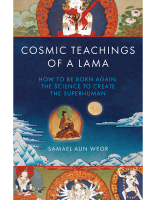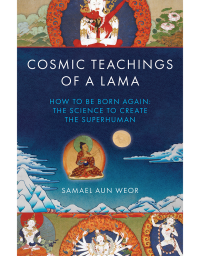Radio astronomy is an Atlantean science lost in the profound night of all centuries. This science re-emerged in our day and age, in an apparently very casual way, thanks to the incessant efforts performed by Karl G. Jasnky of the Bell Telephone Laboratories in New Jersey. His assignment was to track down and scientifically identify the various forms of high frequency static interference that, in a very disturbing way, were plaguing the vital transoceanic telephone communications of his corporation.
On August 1931, Jansky started his observations by utilizing a longitudinal wave of 14.6 meters (20,600 kilocycles). Thus, very soon, he managed to detect the sources of two types of cosmic static.
The first source of cosmic static was evidently attributed to thunderbolts, which are produced in a terrific way during any storm.
The second source of cosmic static was qualified by the aforementioned sage as very distant storms whose radio-emissions were probably deviated towards the Earth by the ionized regions from the polar caps of the atmosphere.
However, something unusual appeared, something peculiar happened: he managed to detect something he was not searching for. It was a high-pitched whistle sound, whose strange intensity was slowly varying during the day.
Jansky very sincerely informed the “Proceedings of the Institute of Radio Engineers” that the direction of this strange and mysterious whistle sound was going around every twenty-four hours, in all cardinal points of the compass. He stated, “In the past months of December and January, its (the sound’s) direction generally coincided with that of the Sun. Yet, its source could not be detected with precision. Then, its direction deviated, and in March, it preceded the direction of the Sun in time by approximately one hour.”
It is evident that Jansky supposed many things, he made up many conjectures in relation to that strange sound. It is no wonder, since this subject matter was extremely rare. However, he finally arrived at his own conclusions. He stated, “The radio emissions seem to come from a unique source or from a great number of sources which are disseminated throughout the firmament, beyond the solar system.”
It has been established with complete exactitude that the special cosmic center from where such radio emissions come is found in the direction of the center of the galaxy, and lies in the direction of the constellation Sagittarius.
This does not signify in any way that other waves from other corners of the Milky Way do not reach the Earth. It is obvious that our galaxy is a living fountain of radio sounds with various zones of great intensity of emission. The Logos sounds, and our Milky Way is not mute. It sustains itself by means of the Word, by means of the sound, by means of the spermatic and luminous fiat1 of the first instant.
“In the beginning was the Word, and the Word was with God, and the Word was God.” —John 1:1
The sound, the Word, the creator word, propagates itself everywhere, it reaches all places.
It is obvious that the exceedingly frightful Second World War impeded every new progress in radio astronomy.
In February 1942, British radar operators denounced a new form of obstruction adopted by the Germans. Yet, when the knowledge of this new interference was given to J. S. Hey from the Army Operational Research Group, it was verified that the perturbing sound had its origin in a solar spot.
We can affirm, without fear of being mistaken, that radio waves are an amplification of luminous waves of great longitude. The marvelous discovery that some parts of the sky shine in the radio spectral band signifies, as a fact, that something completely new has surged in the firmament.
Indeed, it has been proven in an integral way that clouds of individual atoms2 of hydrogen, contrary to that which happens with pairs of atoms from the gas of hydrogen, emit radio waves of a longitude of twenty-one centimeters. Van de Hulst, the eminent man of science, very wisely suggested that the clouds of hydrogen dispersed throughout the universe must be dispersing radio waves of twenty-one centimeters in all directions.
Indeed, the atom of hydrogen consists of one electron and one proton, both describing authentic, real, and magnificent orbits, and therefore acting harmoniously like two fine magnetic wires. Just as the poles in contiguous magnets repel each other, likewise the most perfect alignment of these two particles occurs when their magnetic poles are found in opposite directions.
This is why the atom acquires a determined force that allows it to liberate the electron, in such a way that its positive pole remains aligned with the positive pole of the proton. Once this liberation occurs, the atom preserves a slight reserve of energy. Then, the best finally comes: the electron is liberated and very intelligently emits the energy in a form of a radio-wave. This, in itself, always oscillates with a frequency of 1,420,405,752 times per second (1420 megacycles). This indeed corresponds to a wave of a longitude of twenty-one centimeters.
It is evident that the discovery of emissions of twenty-one centimeters gave a formidable impulse to radio astronomy.
Hence, it is obvious, palpable, and clear that eruptions in the Sun determine the temperature on the surface of the Moon and in the closest planets; this also reveals the existence of atomic particles trapped and furiously spinning in distant magnetic fields (as is occurring in the turbulent gaseous clouds in the nebula of Cancer, etc.) which have been scientifically registered.
The first great antenna of the National Radio Astronomy Observatory in West Virginia was planned for waves of longitude of twenty-one centimeters. Two physicists proposed to search for intelligent signs from other planets.
In these critical moments of our existence, it is evident that other planetary humanities are sending us waveforms related with prime numbers; they await our answer with eagerness. The presence of interstellar signs is entirely real; yet, if we do not capture them it is because the means to perform such a task is not yet within our reach.
Many intellectuals will deny the profound, practical, and philosophical importance that the confirmation of interstellar communications would have.
We, the Gnostics, believe that a search for particular signs deserves, indeed, a series of considerable super-efforts. The possibilities of success are difficult to estimate; yet, if we do not investigate, if we do not actualize the intent, those possibilities will be reduced to zero.
Indeed, there are one hundred stars with a very proper size within a distance of fifty light years.
It is obvious that among the seven stars which are about fifteen light years in distance, three of them—namely Alpha Centauri, Serpentary 70, and Cygni 61—are completely visible from the Earth against the marvelous background of the Milky Way. This invites us to think that the emissions of twenty-one centimeters, which have originated far beyond them, would be forty times more intense than those of other regions of the infinite starry space. Therefore, the emitted signs that have originated close to such stars, on the wave of a longitude already indicated, can only be captured if they are extremely intense.
In order to send messages to planets in the distance of some ten light years, we would need an antenna like the one that is projected by the Navy near Sugar Grove, West Virginia,3 providing that the receptor antenna is of the same dimensions as the transmitter antenna, and that it utilizes transmitters no more potent than those which are presently utilized on the Earth.
We must comprehend that since long ago, other planetary humanities established channels of communication that someday we must come to know. They continue to wait patiently for the answer from our terrestrial world. This will announce to them that a new society has emerged in order to form part of their intelligent fraternity.







